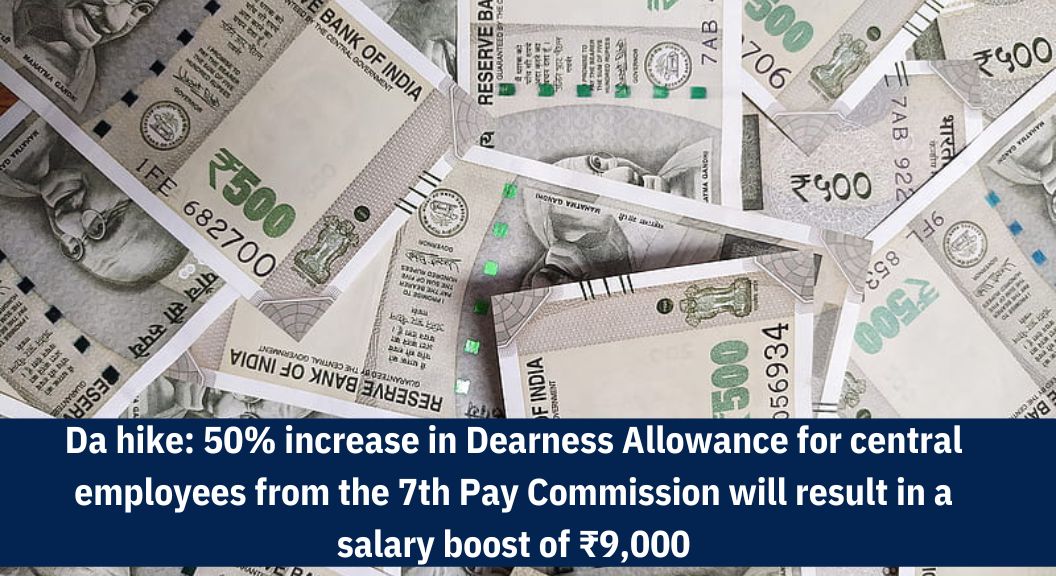Da hike: The seventh pay commission boosted central workers’ dearness allowance by 4%. Salary will also rise beginning in November. Was the enjoyment, however, restricted to the holiday season? No, more good news is still on the way for central personnel. They will receive further fantastic items in the following days.
Central staff have gotten extremely excellent news on the 7th pay commission increase. Finally, central workers’ dearness allowance increased by 4%. The cabinet accepted it on Wednesday, and the employees’ dearness allowance reached 46 percent. Was the enjoyment, however, restricted to the holiday season? No, more good news is still on the way for central personnel. They will receive further fantastic items in the following days.
7th Pay Matrix New Table 2023 Check Updates, new salary structure
DA Hike Latest News: DA for central government employees news latest update
7th pay commission latest news today 2023, Central Government employees DA Growth Rate?
Da hike Leave travel allowance section 10(5)
Employees’ allowance became effective on July 1, 2023. However, the conversation regarding the next allotment has begun. This is due to two factors. For starters, the AICPI index statistics have only been available for two months. This has witnessed a significant growth. This, however, is not the ultimate rise. We will have to wait till 2024 for this. Because the inflation index statistics from July to December will determine how much the DA will rise over the next year. However, the figures for July and August have arrived. This has also witnessed a large growth.
What Is The Second Big Reason?
The second significant cause for the debate over dearness allowance for 2024 is 50 percent DA. Because there is a provision that reduces it to zero only when this occurs. In addition, there will be Lok Sabha elections in the next year. As a result, a large present might be offered to the staff. If there is a 50 percent dearness allowance, it is merged into basic. If this happens, the employees’ salaries would be increased by at least Rs 9000.
What is the AICPI index number in India
The AICPI index statistics have been provided by the Labour Bureau. Its figures have been coming in for two months (July and August). The September number will be released on October 31st. The index has already hit 139.2 points. The overall DA has reached 47.97% on this basis. According to the data up to June, the dearness allowance was increased by 4%. The total dearness allowance score at the time was 46.24 percent. The data for September, October, November, and December will now determine how much the dearness allowance will grow beginning in January 2024. Experts predict that by January 2024, the dearness allowance will have surpassed 50%.
What will happen if da is 50 percent for central govt employees
According to the 7th pay commission, whenever a central employee’s dearness allowance exceeds 50%, the dearness allowance would be decreased to zero. This means that the computation of dearness allowance will begin at 0 and any amount received in excess of 50% will be integrated into the basic wage. The government lowered it to zero by adopting the 7th Pay Commission in 2016. After then, half of it will be revised back to zero.
What will be the percentage of increase in salary from 4000 to 4600
When the dearness allowance reaches 50%, it is lowered to zero, and the sum up to 50% is added to the basic wage, i.e. the minimum salary. If an employee’s basic income is Rs 18000, he will receive 50% DA of Rs 9000. However, if the DA is 50% and the dearness allowance is lowered to zero by adding it to the basic income, then Rs 9000 is added to the basic salary.
Why is dearness allowance made zero in India
When a new pay scale is established, the employees’ DA is added to their base income. According to experts, as a general rule, employees’ DA should be added to their base wage, but this is not achievable. The financial position interferes. However, this was completed in 2016.
Prior to that, when the sixth pay scale was introduced in 2006, 187 percent DA was being paid under the fifth pay scale until December. The full DA was included into the base salary. As a result, the sixth pay scale coefficient was 1.87. Then a new pay band and grade pay were established. However, it took three years to complete.
